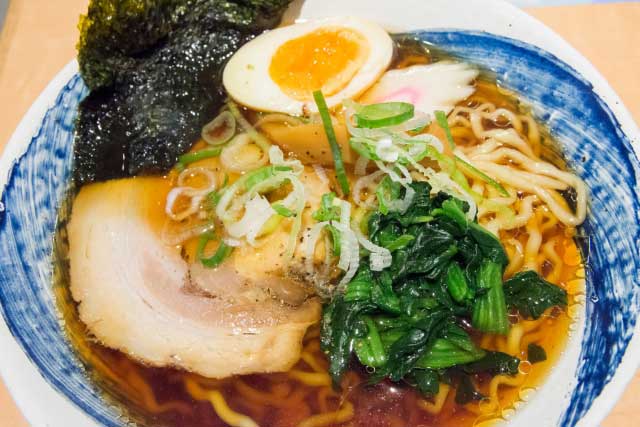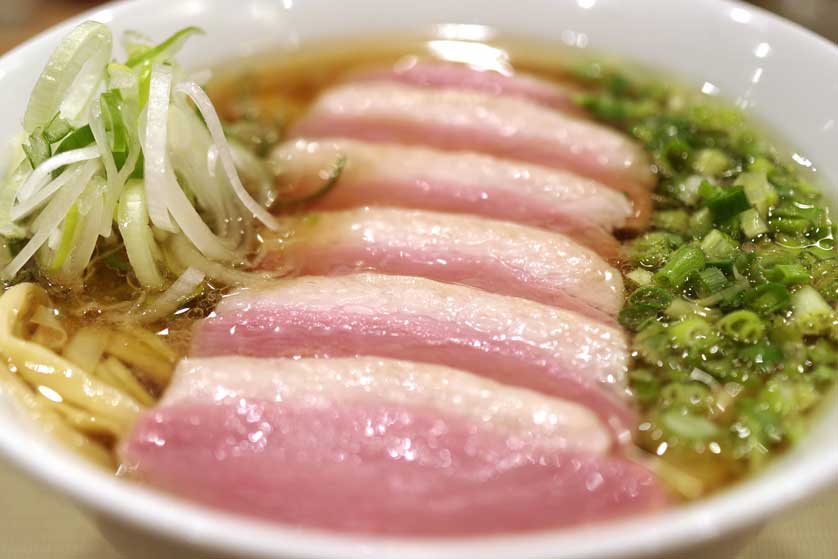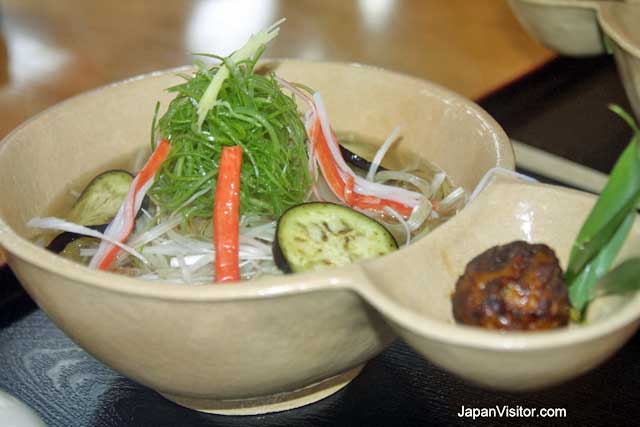Dai Hanjo Ramen: Osaka's unique contribution to Japan's ramen culture

In the vibrant tapestry of Japanese cuisine, ramen holds a special place, with countless regional variations delighting noodle enthusiasts across the country. Among these, Dai Hanjo Ramen stands out as Osaka's distinctive contribution to this beloved dish. Born from the creativity of local ramen aficionados, this unique style of ramen encapsulates the spirit of Osaka - innovative, dynamic, and deeply rooted in local culture. As we delve into the world of Dai Hanjo Ramen, we'll explore its origins, key features, cultural significance, and how it compares to other regional styles, offering a flavorful journey through Japan's rich ramen landscape.
The birth and history of Dai Hanjo Ramen
The story of Dai Hanjo Ramen begins on October 1, 2006, when Oukura Yoshikazu and three other ramen shop owners from Osaka Prefecture unveiled their creation to the world. These self-proclaimed "ramen freaks" met through a ramen fan club and embarked on a six-month journey of experimentation and preparation to create a ramen that would represent Osaka. Their goal was ambitious - to fill the void left by history, as Osaka, despite its rich culinary heritage, had been a notable exception in Japan's map of regional ramen varieties.
The creators of Dai Hanjo Ramen were driven by a desire to make history, recognizing the deep connection between noodles and Japanese cultural identities since at least the 17th century. They understood that ramen, like other noodle dishes, had become a defining feature of regional cultures across Japan. From Tokyo's soba to western Japan's udon, noodles had long been intertwined with local tastes and traditions.
To bring their vision to life, the group enlisted the help of Mr. Nishihara, a noodle maker, to chair their efforts. Together, they set out to invent a ramen that would become synonymous with Osaka, much like how other cities had their own ramen namesakes. This collaborative effort reflected the entrepreneurial spirit of Osaka, a city known for its history and the engaging character of its population.
Key features and ingredients of Dai Hanjo Ramen
Dai Hanjo Ramen is distinguished by several unique features that set it apart from other regional ramen styles. At the heart of this innovative dish is its serving vessel - a unique piece of pottery made from clay taken from Osaka Bay. This light beige bowl is not only unusual in color but also in shape, featuring two depressions instead of one, giving it the appearance of a two-lobed gourd or "hyotan" in Japanese.
The larger well of the hyotan-shaped vessel contains the traditional ramen elements - noodles, broth, meat, and vegetables. However, it's the smaller well that houses the distinguishing ingredients of Dai Hanjo Ramen. The star of this section is the "hanjo maru," a round ball reminiscent of Osaka's famous takoyaki but with a twist. Instead of octopus, the hanjo maru contains shaved kelp, a natural flavor enhancer.
Another key component is the sweet and savory sauce poured over the hanjo maru. This sauce's main ingredient is a Sakai-made soy sauce, highlighting the use of local products. The interactive element of the dish comes from dropping the hanjo maru into the broth at a point of the diner's choosing, allowing the sauce and kelp to modify the flavor of the ramen dynamically.
The ingredients chosen for Dai Hanjo Ramen reflect a careful balance of tradition and innovation, with each element selected to represent aspects of Osaka's culinary heritage and culture. From the locally-sourced clay of the bowl to the Sakai soy sauce, every component tells a story of the region's flavors and traditions.

Symbolism and cultural significance in Dai Hanjo Ramen
Dai Hanjo Ramen is more than just a delicious meal; it's a bowl brimming with cultural symbolism and local pride. The name itself, "Dai Hanjo," is a clever play on words that ties the dish firmly to Osaka. The first two characters, "dai" and "han," are the same ones used to write "Osaka," while "hanjo" means prosperity. This wordplay associates Osaka with prosperity and both with the new ramen, creating a powerful cultural connection.
The hyotan-shaped serving dish is rich in symbolism. It's associated with Hideyoshi Toyotomi, the founder of Osaka city, who used a large hyotan as his battle standard. In nature, many hyotan grow on a single plant, symbolizing prosperity. The Japanese expression "a horse from a hyotan" describes an unexpected fortunate event, adding layers of meaning to the dish's presentation.
The garnish of three leaflets of sasa, a prolific species of bamboo, adds another cultural dimension. Sasa is a symbol associated with Ebisu, a patron god of business people and fisher folk in the Osaka area. During the Toka Ebisu festival, young girls in kimono offer these leaflets, calling out blessings for business prosperity. This garnish connects the ramen to local festivals and beliefs, further embedding it in Osaka's cultural fabric.
By incorporating these elements, Dai Hanjo Ramen becomes more than just a meal - it's a celebration of Osaka's history, culture, and aspirations. It represents the city's entrepreneurial spirit, its connection to local deities, and its hope for continued prosperity.

Where to find and experience Dai Hanjo Ramen
For those eager to taste this unique Osaka creation, Dai Hanjo Ramen can be found at the shops run by its creators. These pioneering ramen enthusiasts maintain a website at www.daihanjo.jp, where visitors can find the locations of their shops. This website serves a dual purpose - not only does it provide information about where to find Dai Hanjo Ramen, but it's also an integral part of the creators' plan to refine and perfect their recipe.
The creators of Dai Hanjo Ramen are actively seeking feedback from those who try their dish. They view this as a collaborative process, inviting ramen enthusiasts to be part of the ongoing evolution of Osaka's signature ramen. By collecting opinions through their website, they aim to incorporate customer feedback into the recipe, ensuring that Dai Hanjo Ramen truly becomes a representation of Osaka's tastes and preferences.
While initially available only at select locations in Osaka, the creators hope to see Dai Hanjo Ramen served in more restaurants in the future, both within Japan and internationally. This expansion would not only make the dish more accessible but also help spread awareness of Osaka's unique contribution to ramen culture globally.
For visitors to Osaka, trying Dai Hanjo Ramen offers a chance to taste a piece of culinary history in the making. It's an opportunity to experience the flavors, textures, and cultural symbolism that make this ramen uniquely Osakan.

Jiro style ramen: A different approach to ramen culture
While Dai Hanjo Ramen represents Osaka's unique contribution to ramen culture, it's worth exploring another distinctive style that has gained a cult following - Jiro style ramen. Originating from Tokyo, Jiro style ramen offers a stark contrast to the refined and symbolism-rich Dai Hanjo Ramen.
Jiro style ramen is characterized by its massive portions and intense flavors. A typical bowl features a mountain of thick, chewy noodles swimming in a rich, fatty pork-based broth. Toppings are equally generous, often including large slabs of chashu pork, a pile of bean sprouts, and plenty of garlic.
The dining experience at a Jiro-style ramen shop is unique and often intimidating for newcomers. Customers are expected to order quickly and eat their ramen promptly, as the noodles can become soggy if left too long in the hot broth. The atmosphere is often no-frills, focusing entirely on the ramen itself.
Jiro style ramen has spawned its own subculture, with dedicated fans known as "Jirorians." These enthusiasts often challenge themselves to finish the enormous portions and seek out different Jiro-style shops to compare their offerings.
Comparing Dai Hanjo Ramen and Jiro style ramen
Comparing Dai Hanjo Ramen and Jiro style ramen reveals two very different approaches to ramen culture. While both styles have their devoted followers, they appeal to different tastes and dining experiences.
Dai Hanjo Ramen emphasizes cultural symbolism, local ingredients, and a refined dining experience. Its unique serving vessel, carefully chosen ingredients, and interactive eating process create a ramen experience that's as much about culture as it is about flavor. The portions are more moderate, and the flavors are balanced and nuanced.
In contrast, Jiro style ramen is all about excess and intensity. The portions are famously large, and the flavors are bold and unsubtle. Where Dai Hanjo Ramen invites contemplation of its cultural significance, Jiro style ramen challenges diners with its sheer volume and richness.
The presentation also differs significantly. Dai Hanjo Ramen is served in a specially designed bowl that's integral to the experience, while Jiro style ramen typically comes in large, no-frills bowls that can accommodate the massive servings.
In terms of culinary philosophy, Dai Hanjo Ramen represents a thoughtful, innovative approach to creating a regional ramen identity. Jiro style, on the other hand, has organically developed its own identity through its distinctive style and the subculture that has grown around it.
The impact of regional ramen varieties on Japanese cuisine
The development of regional ramen varieties like Dai Hanjo Ramen and Jiro style ramen has had a significant impact on Japanese cuisine and food culture. These unique styles have contributed to the rich tapestry of Japan's ramen landscape, showcasing the country's culinary diversity and regional pride.
Regional ramen varieties have become a source of local identity and pride. Just as Tokyo is known for its shoyu ramen and Kumamoto for its tonkotsu, Osaka now has Dai Hanjo Ramen as its unique contribution. This association between place and ramen style has become a form of culinary tourism, with ramen enthusiasts traveling across Japan to sample different regional specialties.
The popularity of regional ramen has also sparked innovation in the ramen industry. Chefs and ramen shop owners are constantly experimenting with new ingredients, techniques, and presentations to create distinctive styles that can represent their region or gain a following.
Furthermore, the success of regional ramen varieties has influenced broader Japanese cuisine. The concept of regional specialties has been applied to other dishes, and there's an increased appreciation for local ingredients and culinary traditions.
As ramen continues to gain popularity globally, these regional varieties serve as ambassadors for Japanese culture. They offer a window into the local traditions, ingredients, and flavors of different parts of Japan, helping to promote cultural understanding through food.
In conclusion, Dai Hanjo Ramen represents more than just a new style of ramen - it's a testament to the ongoing evolution and innovation in Japanese cuisine. Whether it's the culturally rich Dai Hanjo Ramen or the intense Jiro style, these regional varieties continue to shape and redefine Japan's ramen culture, offering diverse experiences for ramen lovers around the world.
For those interested in exploring more about Japanese cuisine and culture, consider checking out these Books on Japanese Food or visiting the Instant Noodle Museum to learn more about the fascinating History of Noodles.









